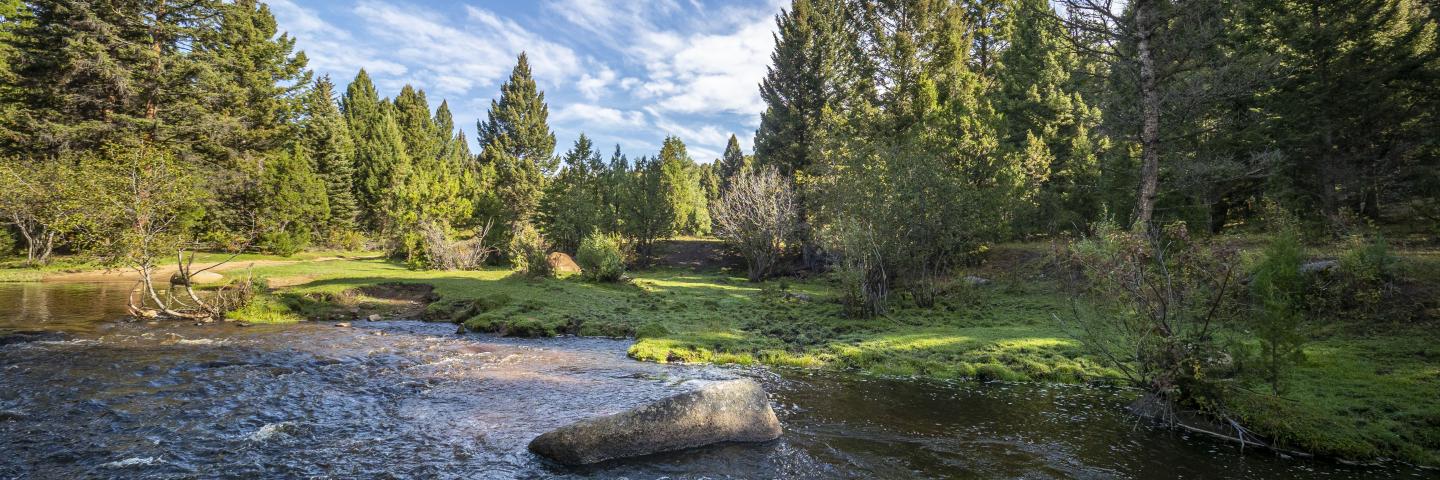USDA Invests More than $46 Million to Protect Communities from Wildfires, Restore Forest Ecosystems and Improve Drinking Water

The U.S. Department of Agriculture (USDA) will invest more than $46 million this year through the Joint Chiefs’ Landscape Restoration Partnership for projects that mitigate wildfire risk, improve water quality, and restore healthy forest ecosystems on public and private lands.
BOISE, ID, January 21, 2021 – The U.S. Department of Agriculture (USDA) will invest more than $46 million this year through the Joint Chiefs’ Landscape Restoration Partnership for projects that mitigate wildfire risk, improve water quality, and restore healthy forest ecosystems on public and private lands. Funding for 37 projects includes $13 million for eight new projects and $33.3 million to complete work on 29 projects previously selected in 2019 and 2020. Through the projects, USDA’s Forest Service (FS) and Natural Resources Conservation Service (NRCS) are working hand-in-hand with agricultural producers, forest landowners, and National Forest System lands to improve forest health using available Farm Bill conservation programs and other authorities.
These Joint Chiefs projects are proof positive of what can be achieved when there is collaboration at all levels – federal, state, and local,” said Curtis Elke, NRCS State Conservationist in Idaho. We’re proud to help continue these conservation partnerships and successes with these next eight projects, including the project here in Idaho.”
The Joint Chiefs’ Landscape Restoration Partnership enables NRCS and FS to collaborate with agricultural producers and forest landowners to invest in conservation and restoration at a big enough scale to make a difference. Working in partnership, and at this scale, helps reduce wildfire threats, protect water quality and supply, and improve wildlife habitat for at-risk species.
North Fork Hazardous Fuels Reduction Project in the Salmon Challis National Forest in Lemhi County is one of eight new projects. The purpose of the project is to implement fuels reduction treatments in areas threatened by the invasion and continued build-up of cheatgrass on federal and private land. Sources and causes of this build-up include disturbance from wildfire, mining, timber harvest, heavy use by big game, and grazing. Treatments will include ground based and/or aerial herbicide application, re-seeding of native species on federal and private land as well as understory thinning on private land to provide fuel breaks where applicable. The primary goal of this project is to reduce the wildfire threat to at-risk communities, wildfire threat to wildlife habitats of at-risk species, while also protecting and improving localized watershed conditions by reducing fine fuel buildup and controlling further cheatgrass colonization within the area.
The other seven projects are:
- Alabama and Florida: Sustaining Gains in Longleaf Pine Restoration Through Coordinated Cogongrass Control
- Alaska: Prince of Wales Landscape Restoration Partnership
- New Mexico: Sierra Blanca Restoration Partnership
- Oregon: Buttes to Basins - All Lands Forest Resiliency Project
- Oregon: Lake County All Lands Restoration Initiative
- Puerto Rico: Ecosystem Resilience Through Conservation Practices
- Tennessee: East Tennessee Aquatic Habitat for At Risk Species
Through the new three-year projects, landowners will work with local USDA experts and partners to apply targeted forestry management practices on their land, such as thinning, hazardous fuel treatments, fire breaks, and other systems to meet unique forestry challenges in their area.
For full project descriptions and information on completed projects, visit the Joint Chiefs’ Landscape Restoration Partnership website.
Successful Partnerships
USDA has invested more than $247 million over seven years in Joint Chiefs’ Landscape Restoration Partnership projects, which focus on areas where public forests and grasslands intersect with privately-owned lands. This year’s selections bring the total number of projects to 93.
Since 2014, these projects have delivered important forest and rangeland funding to 40 states and Puerto Rico. A partnership that has demonstrated success over the past few years is the Greater La Pine Basin Cohesive Strategy project in Oregon. This project reduced hazardous fuels on over 18,500 acres of federal and private lands. In July 2020, these treatments helped firefighters suppress the 393-acre Rosland Road fire, preventing it from spreading into the nearby community of La Pine, Ore.
More Information
Agricultural producers and forest landowners interested in a project to mitigate wildfire risk should contact their local USDA Service Center to learn if their land is eligible.
All USDA Service Centers are open for business, including those that restrict in-person visits or require appointments. All Service Center visitors wishing to conduct business with FSA, NRCS, or any other Service Center agency should call ahead and schedule an appointment. Service Centers that are open for appointments will pre-screen visitors based on health concerns or recent travel, and visitors must adhere to social distancing guidelines. Visitors are also required to wear a face covering during their appointment. Our program delivery staff will continue to work with our producers by phone, email, and using online tools. More information can be found at farmers.gov/coronavirus  .
.
###
USDA is an equal opportunity provider, employer and lender.

